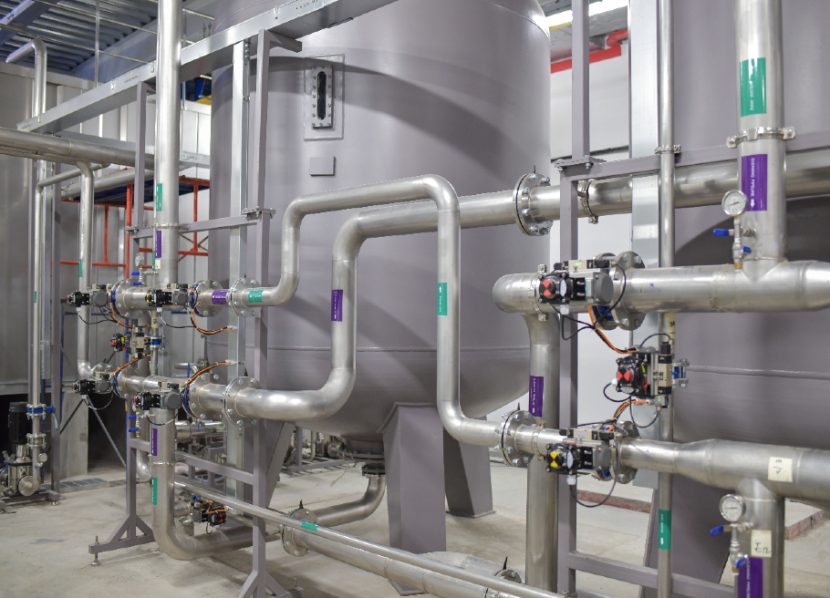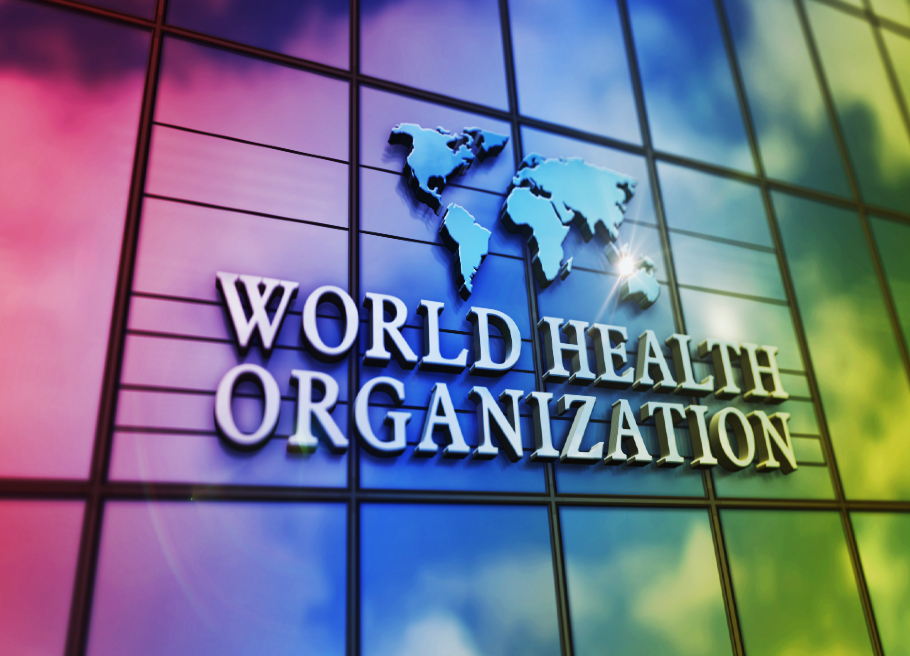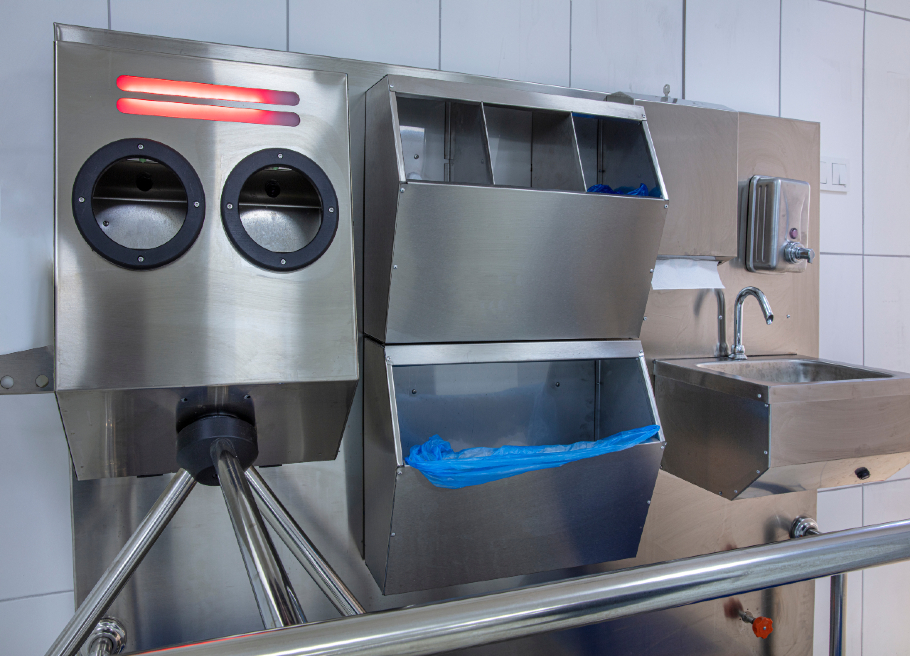Designing Food Processing Plants with Sanitation in Mind
By James Rush
It is obvious that new food processing facilities are being designed to bring enhanced efficiency and effectiveness to operations. To meet these criteria, design professionals are charged with keeping labor costs low, productivity high, and minimizing down time to bring the entire project in on time and within budget. A tall order, but completely within the realm of the architecture and design community.
But where does sanitation rank among these other critically important criteria? According to Sebastian Bohn, Alt Protein Lead at CRB Group, sanitation ranks very high in criteria as they design food processing facilities, others have admitted that they are sometimes slow to adopt new sanitation technologies. A better understanding of the problem and mitigation options will help.
Suffice it to say that foodborne illness has a great cost. People get sick, get hospitalized and sadly some die. Direct and indirect costs of an outbreak or recall can significantly impair earnings, reduce brand value, market capitalization, and severely impact customer loyalty. Although the costs are high, the probability of an outbreak or recall is relatively low. Like all forms of insurable risk, it is sometimes hard to implement better design in place of higher ‘insurance premiums.
Let’s examine the points at which we need pathogen control solutions, and what design considerations are important to ensure the successful delivery of the best solutions.
1. Points of Pathogen Control
Pathogens are everywhere and move easily. The acronym FATTOM is used to describe the conditions necessary for growth – food, acidity, time, temperature, oxygen, and moisture. For food processors, pathogens enter their facilities on food. Especially those of animal origin, those grown where manure is used as fertilizer or products washed in unclean water. In climates where wet, soiled conditions are present, pathogens may enter of the bottom of foot or wheeled traffic.
Once in, pathogens move from floors to clothing to hands to food contact surfaces and ultimately to food. A second point of pathogen movement of concern is at cross-over points especially the raw to ready to eat intersection.
The implications to control pathogen movement into and within a plant are:
- Control the floor by controlling the perimeter
- Control the cross-contamination points
- Control the last mile
2. Control Solutions
By what criteria should you choose control mechanisms? Although it may seem like we are stating the obvious, sometimes the obvious isn’t so obvious.
First, the solutions should work- and work to a standard you are comfortable with. If you need a 3, 4 or 5 log reduction, make sure your solution has validated that level of efficacy. We are often surprised by the lack of, or poor quality of validation work.
Working with your architects, engineers, designers, and construction professionals, you can meet your sanitation needs without sacrificing your needs for greater efficiency and productivity.
Second, ensure that these solutions are used. For example, we have been surprised by how often we see employees by passing boot washers. Third, these solutions should minimize or even eliminate the use of water and chemicals. Water creates slip and fall conditions for employees, breeding grounds for bacterial growth and detracts from companies achieving their net zero growth targets. Chemicals are clearly dangerous for employees and for end use customers if they ingest them. And fourth, they should contribute, by comparison to alternatives, to productivity goals by minimizing shut down time.
Our experience suggests that food processors choose solutions based on familiarity without taking a hard look at new technologies that are more effective and incur a lower total cost of ownership. Clean Beam for example used Pulsed Ultraviolet Light in all our solutions they are dry, safe, and chemical free and have been proven more effective in independently validated studies.
3. Design Implications
When thinking about design, the following considerations might be helpful:
- Conduct a hazard analysis to identify food and safety risks and the necessary control points.
- Actively challenge all your assumptions, beliefs, and biases you have about control and control mechanisms. How well do you really understand the problem and the solutions available?
- Establish criteria for your choice of solution before choosing.
- Minimize the entry points for people, equipment, and product.
- Ensure each point of entry has the appropriate control mechanism.
- Design the flow of people and equipment through those control mechanisms.
- If you expect employees to use these solutions, train them, monitor usage and act with variations.
- Remember the last mile – despite all your best efforts, pathogens will be present – ensure that your solution set includes a treatment for the last contact surfaces that the food touches. And consider treating the food just prior to packaging.
Designing a food processing facility with sanitation in mind, minimizes the probability of an outbreak or recall. Working with your architects, engineers, designers, and construction professionals, you can meet your sanitation needs without sacrificing your needs for greater efficiency and productivity.
About the author:
James Rush, Ph.D., is VP Marketing at Clean Beam in St Charles IL. Clean Beam designs, manufactures and installs sanitation solutions for food processing, food preparation and healthcare facilities – anywhere product safety is compromised by harmful pathogens. Every patented solution produced is powered by DryZAP!, an intense and broadband form of Pulsed Ultraviolet Light. Our solutions protect the perimeter (footwear, fork truck wheels, pallet jack wheels and pallets), food contact surfaces (conveyors) and the product itself. Our solutions are proven most effective and are dry, safe, chemical free, and easy to maintain.

-
 FeaturedRisk management
The Cost of a Breach: What a Cyberattack Could Mean for Food Safety Recalls
FeaturedRisk management
The Cost of a Breach: What a Cyberattack Could Mean for Food Safety Recalls
-
 FeaturedRisk management
Securing the Food Chain: How ISO/IEC 27001 Strengthens Cybersecurity
FeaturedRisk management
Securing the Food Chain: How ISO/IEC 27001 Strengthens Cybersecurity
-
 FeaturedRisk management
Revolutionizing Food Safety Training: Breaking Out of the “Check-the-Box” Mentality
FeaturedRisk management
Revolutionizing Food Safety Training: Breaking Out of the “Check-the-Box” Mentality
-
 GFSI Standards
GFSI 2025: Building Trust, Tech-Forward Solutions, and Global Unity in Food Safety
GFSI Standards
GFSI 2025: Building Trust, Tech-Forward Solutions, and Global Unity in Food Safety
-
 FeaturedFood Safety
Integrated Pest Management: Strategies to Protect Your Brand’s Reputation
FeaturedFood Safety
Integrated Pest Management: Strategies to Protect Your Brand’s Reputation
-
 FeaturedFood Safety Culture & Training
No Open Door Policy: Challenges That Impact Pest Control in Food Processing Plants
FeaturedFood Safety Culture & Training
No Open Door Policy: Challenges That Impact Pest Control in Food Processing Plants




